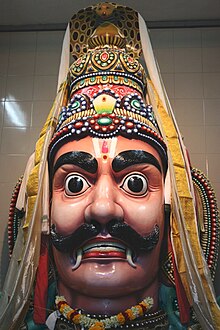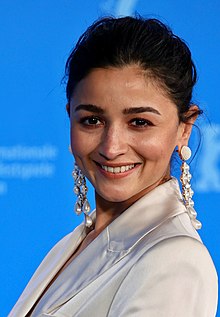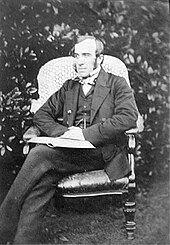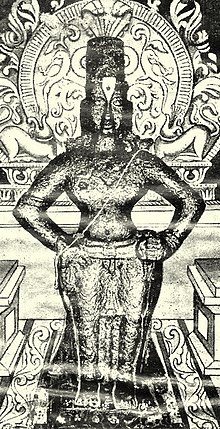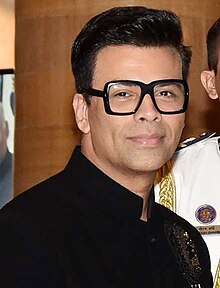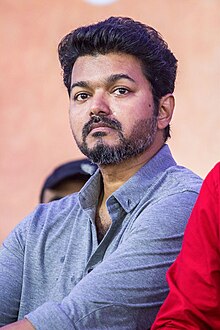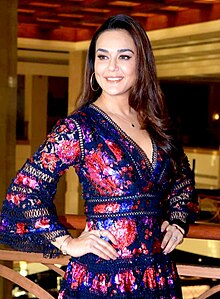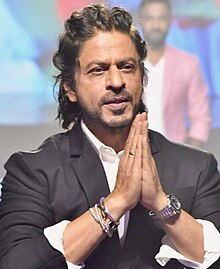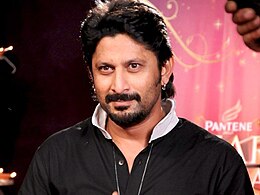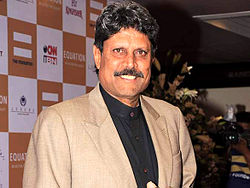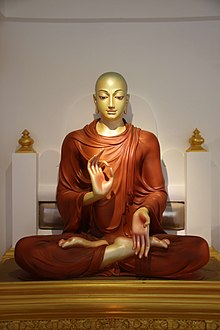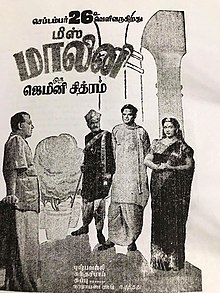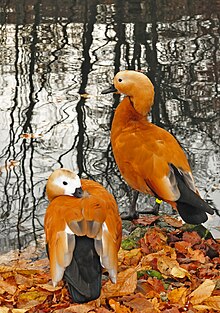Portal:India
Introduction


India, officially the Republic of India (ISO: Bhārat Gaṇarājya), is a country in South Asia. It is the seventh-largest country by area; the most populous country from June 2023 and from the time of its independence in 1947, the world's most populous democracy. Bounded by the Indian Ocean on the south, the Arabian Sea on the southwest, and the Bay of Bengal on the southeast, it shares land borders with Pakistan to the west; China, Nepal, and Bhutan to the north; and Bangladesh and Myanmar to the east. In the Indian Ocean, India is in the vicinity of Sri Lanka and the Maldives; its Andaman and Nicobar Islands share a maritime border with Thailand, Myanmar, and Indonesia. (Full article...)
Selected pictures

The Kerala red rain phenomenon was a blood rain event that occurred in Wayanad district of southern Indian state Kerala on Monday, 15 July 1957 and the colour subsequently turned yellow and also 25 July to 23 September 2001, when heavy downpours of red-coloured rain fell sporadically in Kerala, staining clothes pink. Yellow, green and black rain was also reported. Coloured rain was also reported in Kerala in 1896 and several times since, most recently in June 2012, and from 15 November 2012 to 27 December 2012 in eastern and north-central provinces of Sri Lanka.
Following a light-microscopy examination in 2001, it was initially thought that the rains were coloured by fallout from a hypothetical meteor burst, but a study commissioned by the Government of India concluded that the rains had been coloured by airborne spores from a locally prolific terrestrial green algae from the genus Trentepohlia. (Full article...)
The Murugan Temple at Saluvankuppam, Tamil Nadu, India, is a shrine dedicated to Tamil Hindu deity Murugan. Archaeologists believe that the shrine, unearthed in 2005, consists of two layers: a brick temple constructed during the Sangam period (the 3rd century BCE to the 3rd century CE) and a granite Pallava temple dating from the 8th century CE and constructed on top of the brick shrine making it the oldest temple in India. The Archaeological Survey of India (ASI) team which conducted the excavation believe that brick temple could be the oldest of its kind to be discovered in Tamil Nadu.
The temple was discovered by a team of archaeologists from the ASI based on clues found in a rock inscription left exposed by the 2004 Indian Ocean tsunami. Initially, excavations revealed an 8th-century Pallava-era shrine. Further excavations revealed that the 8th-century shrine had been built on the brick foundation of an earlier shrine. The brick shrine has been dated to the Sangam period. (Full article...)
Miss Malini is a 1947 Indian Tamil-language satirical film written and directed by Kothamangalam Subbu and produced by K. Ramnoth, based on a story by R. K. Narayan. Subbu also starred in the film alongside Pushpavalli and M. S. Sundari Bai. Javar Seetharaman and Gemini Ganesan made their acting debuts in the film appearing in minor supporting roles. The film focuses on Malini (Pushpavalli), an impoverished woman who joins her actress friend Sundari's (M. S. Sundari Bai) theatre company Kala Mandhiram and becomes a success. Things take a turn for the worse when she befriends a charlatan named Sampath (Kothamangalam Subbu).
Miss Malini ridiculed aspects of life in Madras (now Chennai) during the World War II period, and was the only story written by Narayan for the screen that came to fruition. It was released on 26 September 1947, and was accompanied in theatres by Cinema Kadhambam, the first animated film produced in South Indian cinema. Miss Malini was praised by intellectuals; Subbu's performance as Sampath was widely appreciated. The songs composed by S. Rajeswara Rao and Parur S. Anantharaman became popular, and the film gained cult status in Tamil cinema. (Full article...)
It was conceived by Bhardwaj after he met some of the police officials who were investigating the case. He later met Meghna, and expressed his desire to produce a film with her; they then came up with the idea of making a film about the real-life case. They researched the case for two years and found several contradictions, with each view having some validity. Bhardwaj's script was an example of the Rashomon effect. Pankaj Kumar was the film's director of photography, and A. Sreekar Prasad was its editor. (Full article...)
The Indo-German alliance and conspiracy were the target of a worldwide British intelligence effort, which successfully prevented further attempts. American intelligence agencies arrested key figures in the aftermath of the Annie Larsen affair in 1917. The conspiracy resulted in the Lahore conspiracy case trials in India as well as the Hindu–German Conspiracy Trial — at the time the longest and most expensive trial ever held in the United States. (Full article...)
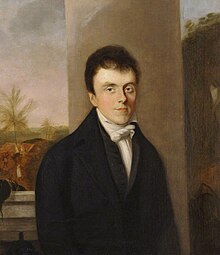
Henry Martyn (18 February 1781 – 16 October 1812) was an Anglican priest and missionary to the peoples of India and Persia. Born in Truro, Cornwall, he was educated at Truro Grammar School and St John's College, Cambridge. A chance encounter with Charles Simeon led him to become a missionary. He was ordained a priest in the Church of England and became a chaplain for the British East India Company.
Martyn arrived in India in April 1806, where he preached and occupied himself in the study of linguistics. He translated the whole of the New Testament into Urdu, Persian and Judaeo-Persic. He also translated the Psalms into Persian and the Book of Common Prayer into Urdu. From India, he set out for Bushire, Shiraz, Isfahan, and Tabriz. (Full article...)
The idea for Soni occurred to Ayr in 2014 when he was reading that Delhi was being put under scrutiny for not being safe for women, especially after the 2012 gang rape case. Ayr read several articles and interviews about the Delhi police and was interested in woman officers' reactions to cases of sexual violence. He spent time with several Delhi police personnel and observed their daily routine. Pre-production started in November 2016 and Ayr finished the script in January 2017 and the film was shot for 24 days in Delhi in February. David Bolen served as the director of photography while Ayr and Gurvinder Singh edited the film. (Full article...)
Dil Chahta Hai was based on Akhtar's diary detailing his trips to Mumbai and New York City, and a story by a friend of his, Kassim Jagmagia, who would ultimately become a creative associate at Excel Entertainment. He started writing the screenplay in 1998 but finished it when the film's principal photography was started two years later. The film was produced on a budget of ₹80 million (US$960,000), and filming took place in both India and Australia. It was one of the first films shot in sync sound, with Nakul Kamte and H. Sridhar handling its sound recording. The trio Shankar–Ehsaan–Loy, with lyrics penned by Akhtar's father, Javed Akhtar, composed the soundtrack and the background score. (Full article...)
Saif Ali Khan (pronounced [ˈsæːf əˈli xaːn]; born Sajid Ali Khan Pataudi; 16 August 1970) is an Indian actor and film producer who primarily works in Hindi films. Current head of the Pataudi family, he is the son of actress Sharmila Tagore and cricketer Mansoor Ali Khan Pataudi. Khan has won several awards, including a National Film Award and seven Filmfare Awards, and received the Padma Shri, the fourth highest Indian civilian award in 2010.
Khan made his acting debut in Parampara (1993), and had success in the multi-starrers Yeh Dillagi (1994), Main Khiladi Tu Anari (1994), Kachche Dhaage (1999) and Hum Saath-Saath Hain (1999). In the 2000s, he gained praise and won multiple awards for his roles in the romantic comedies Dil Chahta Hai (2001) and Kal Ho Naa Ho (2003), and had success as a solo male star in the romances Hum Tum (2004), Parineeta, Salaam Namaste (both 2005) and Ta Ra Rum Pum (2007). (Full article...)
Regular collaborators Mohanlal and Priyadarshan were expected to work on a film in 2015, but it was postponed before principal photography began until the following year. Priyadarshan decided to make another film with Mohanlal, and began looking at screenplays. They wanted a break from their usual comedy films. Priyadarshan agreed on a short story by Govind Vijayan which was suggested by Mohanlal. The director developed a plot and screenplay, which was on its final draft in February 2016. The film began principal photography in March and ended in June; it was filmed in Kochi, Ooty, Vagamon, Thiruvananthapuram, and Idukki. (Full article...)
After authoring the mystery novel The Emperor's Riddles (2014) and scripting the historical television series Porus (2017–2018), Nayak wanted to experiment in writing a biography. 2017 was the year of Sridevi's 300th film, Mom; the news of the milestone aroused him to choose the actress as his next subject. Discussion of the book was started the same year, but writing started in mid-2018—following her death in February 2018—and was finished in around 1+1⁄2 years. In research, Nayak used his personal collection of film magazines and interviewed approximately 70 people, including her family members, her contemporaries and her friends. (Full article...)
The ruddy shelduck (Tadorna ferruginea), known in India as the Brahminy duck, is a member of the family Anatidae. It is a distinctive waterfowl, 58 to 70 cm (23 to 28 in) in length with a wingspan of 110 to 135 cm (43 to 53 in). It has orange-brown body plumage with a paler head, while the tail and the flight feathers in the wings are black, contrasting with the white wing-coverts. It is a migratory bird, wintering in the Indian subcontinent and breeding in southeastern Europe and central Asia, though there are small resident populations in North Africa. It has a loud honking call.
The ruddy shelduck mostly inhabits inland water-bodies such as lakes, reservoirs and rivers. The male and female form a lasting pair bond and the nest may be well away from water, in a crevice or hole in a cliff, tree or similar site. A clutch of about eight eggs is laid and is incubated solely by the female for about four weeks. The young are cared for by both parents and fledge about eight weeks after hatching. (Full article...)

The Niedermayer–Hentig Expedition, also known as the Kabul Mission, was a diplomatic mission to Afghanistan sent by the Central Powers in 1915–1916. The purpose was to encourage Afghanistan to declare full independence from the British Empire, enter World War I on the side of the Central Powers, and attack British India. The expedition was part of the Hindu–German Conspiracy, a series of Indo-German efforts to provoke a nationalist revolution in India. Nominally headed by the exiled Indian prince Raja Mahendra Pratap, the expedition was a joint operation of Germany and Turkey and was led by the German Army officers Oskar Niedermayer and Werner Otto von Hentig. Other participants included members of an Indian nationalist organisation called the Berlin Committee, including Maulavi Barkatullah and Chempakaraman Pillai, while the Turks were represented by Kazim Bey, a close confidante of Enver Pasha.
Britain saw the expedition as a serious threat. Britain and its ally, the Russian Empire, unsuccessfully attempted to intercept it in Persia during the summer of 1915. Britain waged a covert intelligence and diplomatic offensive, including personal interventions by the Viceroy Lord Hardinge and King George V, to maintain Afghan neutrality. (Full article...)
The gharial (Gavialis gangeticus), also known as gavial or fish-eating crocodile, is a crocodilian in the family Gavialidae and among the longest of all living crocodilians. Mature females are 2.6 to 4.5 m (8 ft 6 in to 14 ft 9 in) long, and males 3 to 6 m (9 ft 10 in to 19 ft 8 in). Adult males have a distinct boss at the end of the snout, which resembles an earthenware pot known as a ghara, hence the name "gharial". The gharial is well adapted to catching fish because of its long, narrow snout and 110 sharp, interlocking teeth.
The gharial probably evolved in the northern Indian subcontinent. Fossil gharial remains were excavated in Pliocene deposits in the Sivalik Hills and the Narmada River valley. It currently inhabits rivers in the plains of the northern part of the Indian subcontinent. It is the most thoroughly aquatic crocodilian, and leaves the water only for basking and building nests on moist sandbanks. Adults mate at the end of the cold season. Females congregate in spring to dig nests, in which they lay 20–95 eggs. They guard the nests and the young, which hatch before the onset of the monsoon. The hatchlings stay and forage in shallow water during their first year, but move to sites with deeper water as they grow. (Full article...)
Kempegowda International Airport (IATA: BLR, ICAO: VOBL) is an international airport serving Bangalore, the capital of the Indian state of Karnataka. Spread over 4,000 acres (1,600 ha), it is located about 35 km (22 mi) north of the city near the suburb of Devanahalli. It is owned and operated by Bengaluru International Airport Limited (BIAL), a public–private consortium. The airport opened in May 2008 as an alternative to increased congestion at HAL Airport, the original primary commercial airport serving the city. It is named after Kempe Gowda I, the founder of Bangalore. Kempegowda International Airport became Karnataka's first fully solar powered airport, developed by CleanMax Solar.
The airport is the third-busiest airport in India, behind the airports in Delhi and Mumbai. It is the 25th busiest airport in Asia, and the 56th busiest airport in the world. In FY 2023–24, the airport handled over 37.5 million passengers and 439,495 tonnes (484,460 short tons) of cargo. The airport offers connecting flights to all six inhabited continents, and direct flights to five of them. (Full article...)

Taruni Sachdev (14 May 1998 – 14 May 2012) was an Indian child actress. She made her film debut in 2004 with Vellinakshatram, which endeared her to Malayalam audiences. The same year, she appeared in Sathyam and she acthe lead role in 2009. She also appeared in over 50 advertisements for various companies. Her last film was a Tamil film Vetri Selvan (2014), which was released two years after her death. She died in the 2012 Agni Air Dornier 228 crash near Jomsom Airport in Nepal. Her mother also died in the crash. (Full article...)
AVM Productions wanted to make a film to celebrate their golden jubilee in 1997. The project, which would be titled Minsara Kanavu, was produced by M. Saravanan, M. Balasubramanian, and M. S. Guhan. Menon responded to an advertisement for a director and cinematographer, and made his directorial debut with the film. Venu and Ravi K. Chandran completed the principal photography, and Prabhu Deva choreographed the film. A. R. Rahman composed the soundtrack, which received positive reviews, and the songs "Mana Madurai", "Strawberry", "Thanga Thamarai", and "Vennilave" became popular. (Full article...)
News
- 26 September 2024 – 2024 India floods
- 2024 Jivitputrika tragedy
- At least 46 people, including 37 children, who were taking part in Jivitputrika festivities in Bihar, India, drown in rivers and bodies of water swollen by ongoing flooding across India. (Reuters)
- Up to 275 mm (10.8 in) of rain falls across Mumbai, India, causing at least four deaths. (Al Arabiya)
- 26 September 2024 – 2024 Lebanon pager explosions
- Norwegian police issue an international search request for a Norwegian-Indian man linked to the sale of pagers to Hezbollah that exploded last week. (Times of Israel)
- 13 September 2024 – Insurgency in Jammu and Kashmir
- Two Indian soldiers are killed in action in clashes with separatists in Kishtwar, Jammu and Kashmir, India. (NDTV)
Did you know...
- ... that before a separate party was created for Pakistan, the All India Scheduled Castes Federation simultaneously held the posts of Minister of Law in both Pakistan and India?
- ... that Jacqueline Kennedy did not want to make her clothes the focus of her 1962 goodwill tour of India and Pakistan, but still wore 22 different outfits in the first nine days?
- ... that 24-year-old Mahasweta Chakraborty of Operation Ganga helped around 800 students return to India during the Russian invasion of Ukraine?
- ... that according to The Wire, the web application Tek Fog was used to "amplify right-wing propaganda" among Indians?
- ... that there is a dispute within the Indian communist movement on whether the Communist Party of India was founded in Tashkent in 1920 or Kanpur in 1925?
- ... that Indian aristocrat and photographer Umrao Singh Sher-Gil left more than 3000 prints and negatives, including many of his daughter Amrita Sher-Gil, documenting life in Europe and India?
Topics related to India
Timeline of Indian history, Indus Valley Civilisation, Dholavira, Science and technology in ancient India, Meluhha, Aryan invasion theory, Out of India theory, Greek conquests in India, Indian maritime history, Maurya Empire, Ashoka, Shunga Empire, Hoysala Empire, Vijayanagara, Satavahana dynasty, Indo-Greek Kingdom, Indo-Scythians, Indo-Parthian Kingdom, Kushan Empire, Western Satraps, Gupta Empire, Chola dynasty, Pala Empire, Islamic incursions in India, Mughal Empire, Maratha Empire, British Raj, East India Company, Governor-General, Viceroy, War of Independence, 1857, Indian independence movement, Indian National Army, Azad Hind, Quit India Movement, Partition of India, History of Republic of India, Non-Aligned Movement, Sino-Indian War, Indo-Pakistani War of 1947–1948, Indo-Pakistani War of 1965, Indo-Pakistani War of 1971, Kargil War, 2001–02 India–Pakistan standoff, Military, Demographic
Law, Hindu law, Constitution, Political parties (Indian National Congress, Bharatiya Janata Party), Foreign relations, Elections, Political divisions, Reservation in India
Government agencies, Legislative branch (Lok Sabha, Rajya Sabha) Executive branch (President & Vice President, Prime Minister & Deputy Prime Minister, Cabinet Ministers, Cabinet Secretary, Election Commission, Foreign Minister; Law enforcement: CBI, CID, Intelligence: IB, RAW), Directorate General of Income Tax Investigation Judicial branch (Supreme Court), Armed Forces (Army, Navy, Air Force, Border Security Force, Coast Guard)
Himalayas, Western Ghats, Eastern Ghats, Indo-Gangetic Plain, Deccan Plateau, Thar Desert, Ganges, Rann of Kutch, Brahmaputra River, Northeast India; Mountains, Valleys, Islands, Rivers; States and union territories, Cities, Districts, Regions, Fauna, Flora
Rupee, Bombay Stock Exchange, National Stock Exchange, Standard of living, Companies, Reserve Bank of India, Energy policy (Solar, Wind, Nuclear), Tourism, Transport (Expressways, Rail transport, Auto rickshaw),
Languages, Standard of living, Religion
Music (Carnatic, Hindustani, Indi-pop), Dance, Languages, Literature, Architecture, Film & TV, Cuisine, Holidays, Folklore, Education, Media, Indian martial arts
Indian Council of Agricultural Research (ICAR), Indian Institute of Astrophysics, National Centre for Software Technology, AIIMS, IISc, IIT, NIT, BITS-Pilani, INRegistry, Indian numbering system, Indian Space Research Organisation, National Internet Exchange of India, ICRISAT, International Institute of Information Technology, Hyderabad
Indian English, Indian nationality law, Numbering system, Indian Space Research Organisation, Telecommunications, National Highways Development Project, Flag, Vehicle registration plates, Indian nationalism, Metrication in India
Categories
Related portals
Religions in India
Indian Subcontinent
Other countries
Wikipedias in Indian languages
- অসমীয়া (Assamese)
- বাংলা (Bengali)
- भोजपुरी (Bhojpuri)
- বিষ্ণুপ্রিয়া মণিপুরী (Bishnupriya Manipuri)
- गोंयची कोंकणी / Gõychi Konknni (Konkani)
- ગુજરાતી (Gujarati)
- हिन्दी (Hindi)
- ಕನ್ನಡ (Kannada)
- कॉशुर/كشميري (Kashmiri)
- मैथिली (Maithili)
- മലയാളം (Malayalam)
- मराठी (Marathi)
- नेपाली (Nepali)
- नेपाल भाषा
- (Newari)
- ଓଡ଼ିଆ (Odiya)
- ਪੰਜਾਬੀ (Punjabi)
- पालि (Pali)
- संस्कृत (Sanskrit)
- ᱥᱟᱱᱛᱟᱲᱤ (Santali)
- سنڌي (Sindhi)
- தமிழ் (Tamil)
- తెలుగు (Telugu)
- ತುಳು (Tulu)
- اردو (Urdu)
Associated Wikimedia
The following Wikimedia Foundation sister projects provide more on this subject:
-
Commons
Free media repository -
Wikibooks
Free textbooks and manuals -
Wikidata
Free knowledge base -
Wikinews
Free-content news -
Wikiquote
Collection of quotations -
Wikisource
Free-content library -
Wikiversity
Free learning tools -
Wikivoyage
Free travel guide -
Wiktionary
Dictionary and thesaurus



